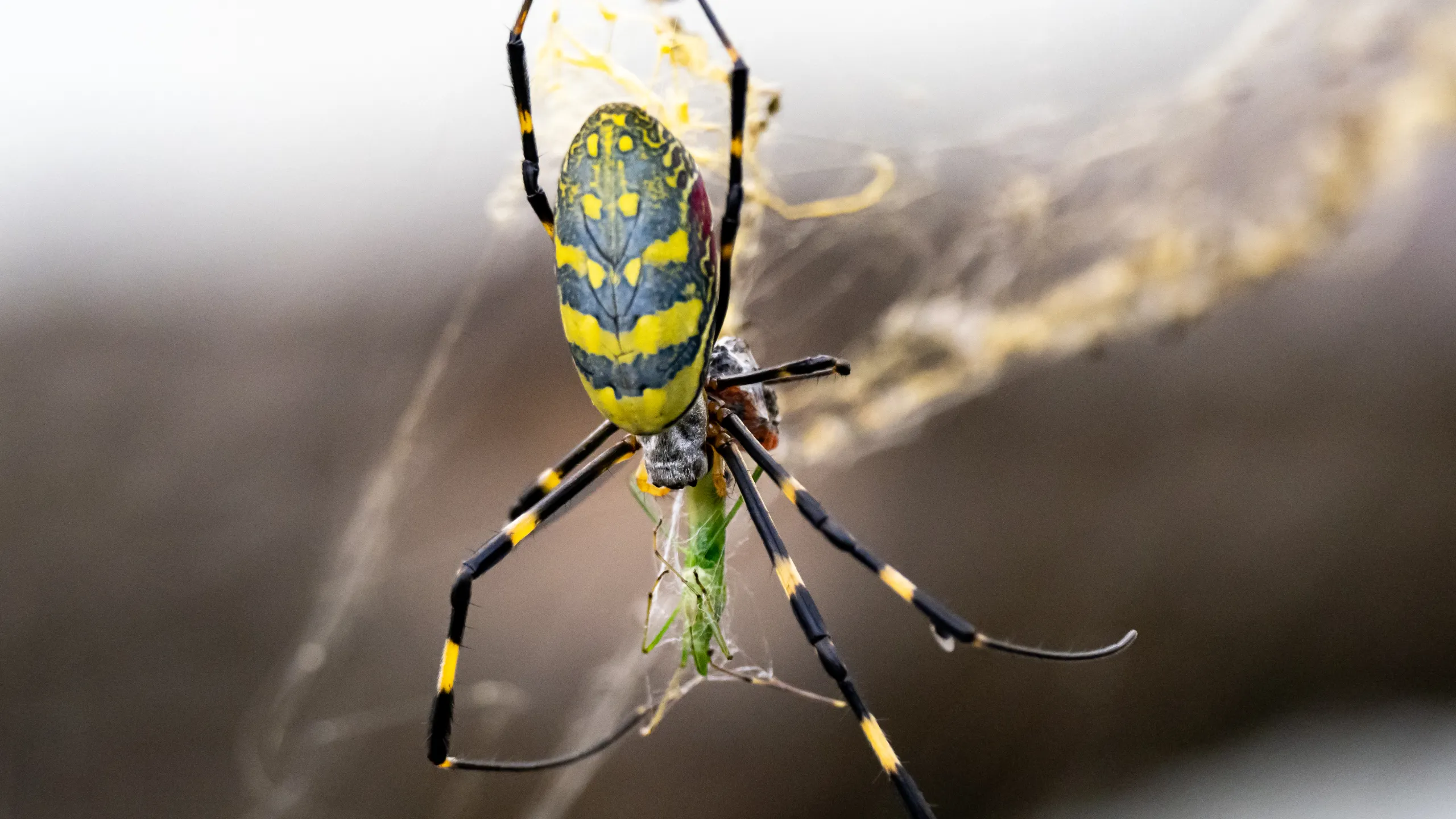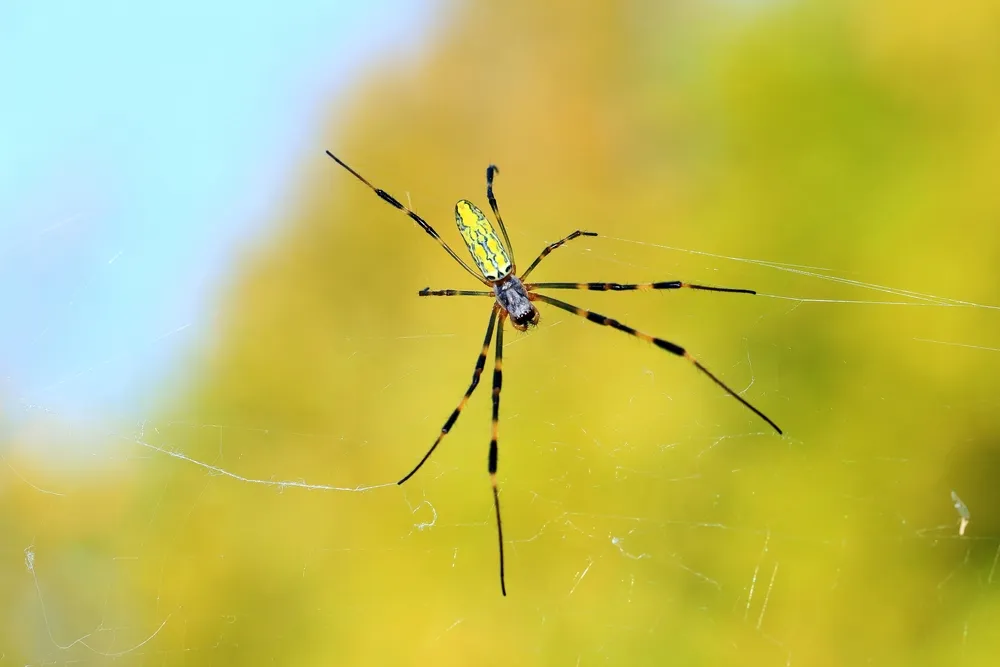In the realm of arachnids, few creatures capture the imagination quite like the Joro spider (Nephila clavata). These stunning arachnids, native to East Asia, have garnered attention for their impressive size and vibrant colors. However, despite their intimidating appearance, Joro spiders play a vital role in the ecosystem and should not be vilified as nightmare fodder. In this comprehensive guide, we delve into the world of Joro spiders, exploring their characteristics, behaviors, and significance in English gardens.
Joro spiders, scientifically known as Nephila clavate, belong to the genus Nephila, which comprises large orb-weaving spiders commonly found in tropical and subtropical regions. These striking arachnids are characterized by their intricate webs, which they use to capture prey.
Relevance and Importance
While Joro spiders may evoke fear in some individuals due to their size and appearance, it’s essential to recognize their ecological importance. As predators, Joro spiders help control insect populations, contributing to natural pest management. Additionally, their presence indicates a healthy ecosystem, as they are sensitive to environmental changes.

Types and Categories
Joro spiders fall under the category of orb-weaving spiders, known for their circular webs with radiating spokes. Within this category, they are further classified based on their geographic distribution and habitat preferences.
Geographic Distribution
Joro spiders are native to East Asia, particularly Japan, China, and Korea. However, they have also been introduced to other regions, including parts of the United States.
Habitat Preferences
These spiders typically inhabit forested areas, where they can construct their webs between trees or shrubs. In urban environments, they may be found in gardens, parks, and green spaces.
Symptoms and Signs
Understanding the characteristics and behavior of Joro spiders can help alleviate fears and misconceptions about these fascinating creatures.
Physical Appearance
One of the most striking features of Joro spiders is their size, with females reaching lengths of up to 2 inches (5 centimeters) or more. They are known for their colorful markings, which vary depending on the species and geographic location.
Web Structure
The webs of Joro spiders are marvels of engineering, consisting of concentric circles connected by radial strands. These intricate webs serve as both hunting traps and shelters for the spiders.
Causes and Risk Factors
While Joro spiders are generally harmless to humans, certain factors may contribute to encounters or conflicts between spiders and people.
Habitat Encroachment
As urban areas expand into natural habitats, encounters between humans and Joro spiders may become more common. Clearing of forests and landscaping practices can disrupt spider habitats, leading them to seek shelter in residential areas.
Fear and Misconceptions
Fear of spiders, known as arachnophobia, is a common phobia that can lead to negative perceptions of Joro spiders. Misinformation and sensationalized media portrayals contribute to these fears, perpetuating myths about spider behavior.
Diagnosis and Tests
Identifying Joro spiders and distinguishing them from other spider species is essential for accurate classification and management.
Physical Characteristics
Key features used to identify Joro spiders include their size, coloration, and web structure. Female Joro spiders are significantly larger than males and exhibit more vibrant markings.
Behavioral Observations
Observing the behavior of Joro spiders in their natural habitat can provide valuable insights into their ecology and interactions with other organisms.
Treatment Options
In most cases, encounters with Joro spiders do not require medical treatment, as they are not venomous to humans. However, individuals who are bitten or concerned about spider encounters may seek reassurance or guidance.
First Aid
If bitten by a Joro spider or any spider species, it’s essential to clean the affected area with soap and water to reduce the risk of infection. Applying a cold compress can help alleviate pain and swelling.
Medical Evaluation
In rare cases of severe allergic reactions or secondary infections, medical attention may be necessary. Healthcare providers can assess the extent of the injury and recommend appropriate treatment.
Preventive Measures
Promoting coexistence between humans and Joro spiders involves implementing strategies to minimize conflicts and ensure mutual respect.
Habitat Preservation
Protecting natural habitats and green spaces is crucial for preserving Joro spider populations and maintaining ecological balance. Conserving forests and minimizing habitat fragmentation can reduce human-wildlife conflicts.
Education and Awareness
Educating the public about the benefits of spiders and dispelling myths can help foster appreciation and respect for these important predators. Outreach programs, signage, and educational resources can enhance public understanding of spider ecology.
Personal Stories or Case Studies
Real-life experiences and anecdotes offer valuable perspectives on human-spider interactions and attitudes toward Joro spiders.
Encounter in the Garden
Sarah, an avid gardener, shares her encounter with a Joro spider in her backyard. Initially startled by its size, she took the opportunity to observe the spider’s behavior and learned to appreciate its role in controlling garden pests.

Community Engagement
Local communities in Japan have embraced Joro spiders as symbols of good fortune and environmental stewardship. Annual festivals celebrate the spiders’ return in the autumn, highlighting their cultural significance.
Expert Insights
Expert opinions provide valuable insights into the behavior, ecology, and conservation of Joro spiders.
Dr. Yuki Tanaka, Arachnologist
“Joro spiders are fascinating creatures with a rich ecological history. Understanding their role in ecosystems is essential for promoting biodiversity and sustainable coexistence with humans.”
Conclusion
In conclusion, Joro spiders are not the stuff of nightmares but rather valuable contributors to the natural world. By dispelling myths and fostering appreciation for these magnificent arachnids, we can promote harmony between humans and spiders in English gardens.










